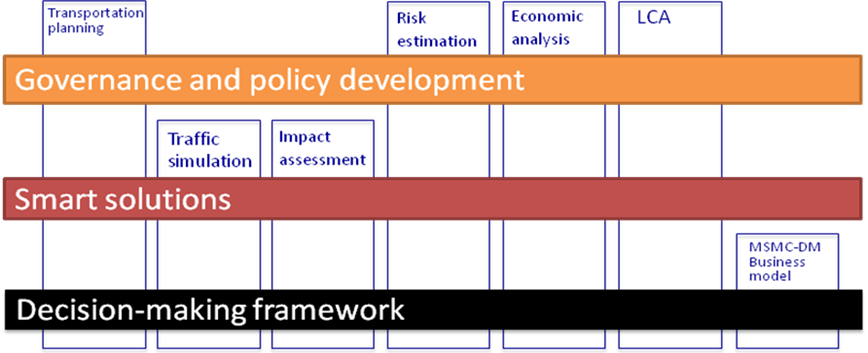ALLIANCE aims at developing advanced research and higher education institution in the field of transport in Latvia by linking the Transport and Telecommunication Institute (TTI) with two internationally recognized research entities – University of Thessaly (UTH) and Fraunhofer Institute for Factory Operation and Automation (IFF).
The overall methodology is built around the analysis of the needs of Latvia and the surrounding region of the Baltic sea (Lithuania, Estonia, Poland) on knowledge gain about intermodal transportation terminals and the development of the tools to attain this knowledge, providing at the same time excellence and innovation capability. The analysis to be conducted during the first stages of the project, steps on the overarching relations among policy makers (e.g. government, city authorities), industry (e.g. transport operators, service providers) and education/research. Structured around three main pillars, organizational/governance, operational/services and service quality/customer satisfaction, ALLIANCE will deliver a coherent educational/training program addressed to enhancing the knowledge of current and future researchers and professionals offering their services in Latvia and the wider region.
The field of interest is “smart solutions and intermodal terminals”, and the vision is that the knowledge transfer through twinning activities will benefit to creating a doctoral programme in Transport Economics and Management at TTI. The educational/training program is structured in three thematic areas thus, governance and policy development, smart solutions and decision-making framework. Each thematic area is going to be elaborated and organized as a summer course, lasting one intensive week each. Specific material will be also developed for the train-the-trainers session, which will transfer knowledge to TTI’s staff on the topics, and involve them in the teaching activities during the summer schools.
A grid of the elements of the thematic areas is depicted in following Figure:

